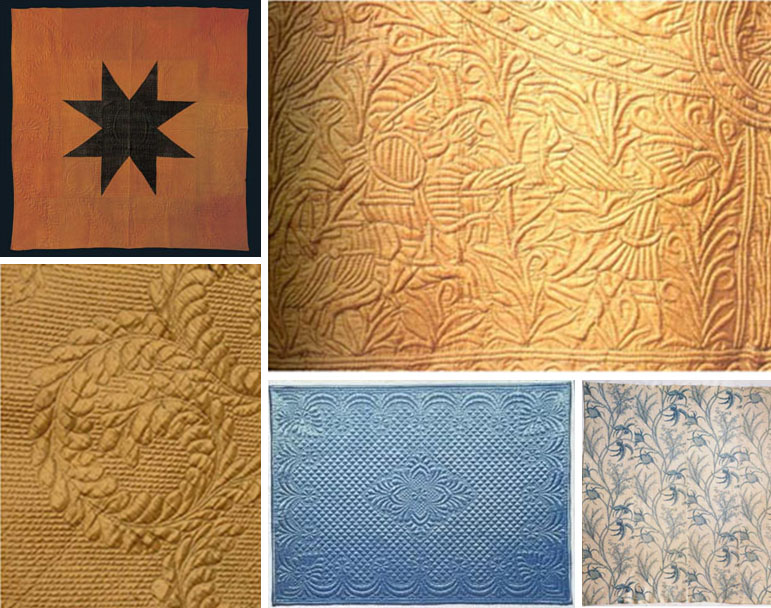Hello there! I am thrilled to announce Part Two (17th and 18th Century Quilts) in this series on the history of the American quilt brought to us by Molly Williams. Over the next six weeks Molly will explore the people, politics, patterns and processes that informed the development of the American quilt. She will take us from early African-American quilts to the 21st Century Art quilts that we see today. I find the history of textiles inspiring and fascinating and I hope you enjoy this series.
17th and 18th Century Whole Cloth Quilts
It is widely thought that the American tradition of patchwork began with the early settlers utilising every scrap of imported fabric to make warm quilts for the homestead. However research suggests that expensive, imported English whole cloth quilts were found in early colonial homes. The making of American whole-cloth quilts did not become established until the 1750’s and it was not until after the The Revolutionary War, when America was freed from trade restrictions imposed by the English, that quilting evolved with a unique American style – bolder colors and innovative designs.
*images (clockwise): “Copper plated printed whole-cloth quilt 1785,” “Cornish trapunto quilt early 17th Century,” “Whole Cloth Quilt,” “Trapunto Close up,” “Whole Cloth Quilt,”
A whole cloth quilt is not made from a single piece of fabric, as the name suggests; it simply means that the quilt is made from fabric of a single color or intricately embroidered to produce a highly textured, tactile design. In addition to embroidery, Trapunto or ‘stuffed technique,’ was used to add extra texture and dimension to whole cloth quilts.
17th and 18th Century Indian Chintz
By the beginning of the 18th century, Broderie Perse, French for “Persian Embroidery”, was a popular method of applique created from patterned chintz imported from India. The clearly defined floral motifs were cut out and appliqued onto plain cloth backgrounds, resulting in stunningly beautiful pieces. These quilts were luxurious, expensive and used for display on special occasions.
*images (Clockwise): “Broderie Perse Quilt,” “Broderie Perse Fragments“
In the 19th century, The Industrial Revolution brought about two key innovations which helped to popularize American quilting. Firstly, mechanised looms emerged, resulting in cheaper American fabrics and yarns. Secondly, the invention of the sewing machine accelerated the process of stitching small pieces of fabric together, making it quicker and easier to piece and produce quilts.– Molly















